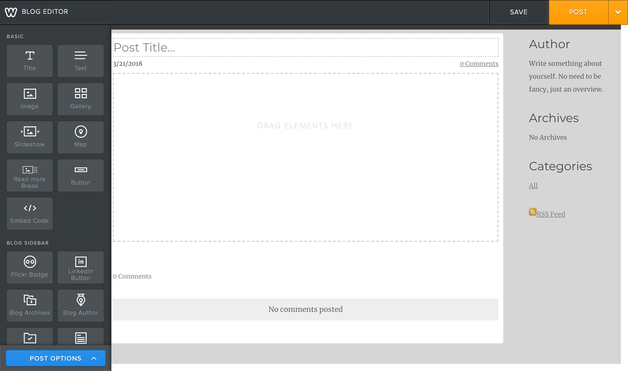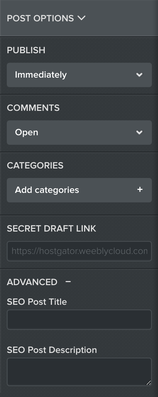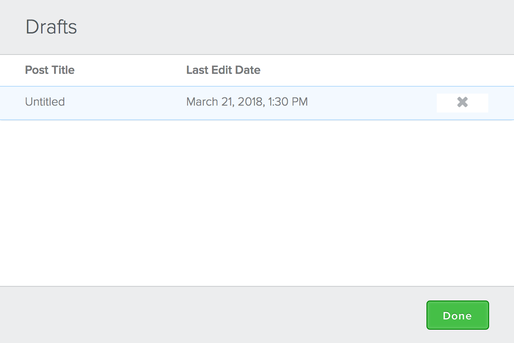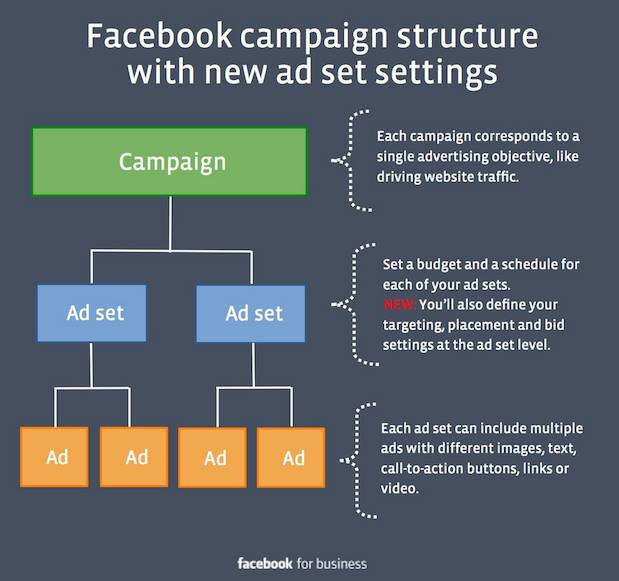-
Guides
-
Templates
-
Image Bank
-
FAQs
<
>
How to edit the website with Weebly
How to Follow The GH2K Brand
You can find the logos in the Image Bank folder.
Coming soon: information on GH2K voice, tone and organizational colors!
Coming soon: information on GH2K voice, tone and organizational colors!
How to make a Blog Post On Weebly
Creating a blog post on Weebly is simple. From the dashboard, click "Edit site" and choose the blog page. From the blog page, click the New Post button:
You will now see your new blog post highlighted in the center of the page. In addition, the elements sidebar at the left-hand side of the page will be slightly different.
This sidebar houses elements that are specific to your blog, and you can use them in the same way you would use them on any other page in Weebly.
|
Post Options (left)
|
Drafts
While creating a new blog post you can keep the post as a draft by clicking Save at the top.
To keep working on the saved draft:
While creating a new blog post you can keep the post as a draft by clicking Save at the top.
To keep working on the saved draft:
- Click Drafts from the bottom toolbar.
2. Here you will see a listing of all of the draft articles.
- To continue editing the post, click on the title or edit date to open the draft post.
- To remove the draft, click on the X on the right-hand side.
What To write a blog about
Here are ideas for blog topics plus 35 ready-to-use headlines. Brainstorm more blog post ideas using the tips in this Hubspot article and Entrepreneur.com article. You can turn any idea into several blog posts by narrowing the focus--just split up the idea into several narrower ideas. And to write engaging headlines that pull readers in, check out Headline Hacks below. (Just note next to the topic when you've used an idea.)
| headline-hacks.pdf | |
| File Size: | 522 kb |
| File Type: | |
Topics to blog about:
- COVID-19 updates
- Prayer requests (and monthly prayer focuses)
- Daily life - anecdotes, fun stories, life lessons
- Youth group and community updates
- Roma campus updates/work projects
- Future ministry plans
- Homeschooling the kids/what they are learning
- Graduates - congratulating them, giving updates on them later
- Agriculture and self-sustainability at GH2K
- New planting projects (and harvest photos)
- House parent/child updates
- Honduran culture
- Fun times with campus visitors/mission trips/volunteer testimonials
- Fundraising appeals (especially before holidays like Christmas)
- [Month] Prayer Focus: Meet [Name] and [Name]
- Back to School with [Name] and [Name]
- Announcing Our New Graduate [Name]
- The Ultimate Guide to Planting: And Why You Reap What You Sow
- Five Reasons Why We Love Harvest Time
- Daily Life on the GH2K Campus
- How You Can Partner With Us To Do [Project]
- Hope for [Name’s] Journey
- Holidays We Love to Celebrate at GH2K
- Our Favorite Things
- What’s Happening in Honduras
- A Story of Hope in Honduras
- Three Things to Know About GH2K
- Why We Are Grateful for You
- How the Quarantine Hasn’t Changed Anything
- Join Us in Prayer for [Project]
- How a Crazy Idea Turned Into a Blessing
- What Every Kid Needs
- How to Make Your Sponsored Child’s Day in 5 Minutes
- Jason’s Top 10 Tips for [ TBD ]
- What Houseparents Can Teach Us About [ TBD ]
- How to Stay In Touch Without Leaving Your House
- Four Reasons We Celebrate [ Anything ]
- 3 Secrets We Want Our GH2K Friends to Know
- Giving Hope for Beginners
- How You Can Be a Hero (Even If You Can’t Give Money)
- The Funniest Thing That Happened All Year
- What to Bring When You Visit Honduras
- GH2K’s Gift to You
- The Moment We Knew We Were Called to Do This Ministry
- An Inside Look at the GH2K Farm
- Another Example of How God Provides Everything We Need
- What Your Kids Will Love About Sponsoring a Child
- You’ll Never Guess What Happened in Honduras
- The Things We Really Love About Our Sponsors and Friends
How to Create a MailChimp Email
- MailChimp Email Design Guide
- Choose a new layout and theme
- Resource: How to learn from MailChimp reports and analytics
- For how to make a MailChimp template, see the Templates tab.
How to Schedule Facebook and INstagram Posts
How to Use Facebook and Instagram Insights
Insights data allows you to get to know your audience, form specific target audiences, and find opportunities for fundraising. Click these links:
- How to use Facebook insights
- How to use Instagram insights
How to Make a Survey
Surveys are a great way to get to know your audience and current donors. Here are three ways send a survey to your email list:
- Make a survey in MailChimp (allows you to analyze data in MailChimp)
- Integrate a SurveyMonkey survey into MailChimp. (allows you to analyze data in MailChimp)
- Make a Google Forms survey and add a button linking to the survey in a MailChimp email (requires you to analyze data separately)
How to Communicate in A Crisis
The book Public Relations Cases by Darrell C. Hayes, Jerry A. Hendrix and Pallavi D. Kumar (2012) is an excellent resource for industry best practices in public relations. The following section summarizes the chapters on crisis communications.
A crisis calls for clear and consistent communication from a spokesperson. This quote from page 346 provides a useful framework for respond to crises that GH2K can apply:
“Because of the exceptional nature of crises, objectives for this form of public relations cannot be carefully planned. Nonetheless, some general guidelines are applicable:
1. To provide accurate, timely information to all targeted internal and external audiences
2. To demonstrate concern for the safety of lives
3. To safeguard organizational facilities and assets
4. To maintain a positive image of the organization as a good corporate or community citizen.
These guidelines will serve the practitioner well in responding quickly during rapidly evolving events when faced with high uncertainty” (346)
Three more guidelines:
A crisis calls for clear and consistent communication from a spokesperson. This quote from page 346 provides a useful framework for respond to crises that GH2K can apply:
“Because of the exceptional nature of crises, objectives for this form of public relations cannot be carefully planned. Nonetheless, some general guidelines are applicable:
1. To provide accurate, timely information to all targeted internal and external audiences
2. To demonstrate concern for the safety of lives
3. To safeguard organizational facilities and assets
4. To maintain a positive image of the organization as a good corporate or community citizen.
These guidelines will serve the practitioner well in responding quickly during rapidly evolving events when faced with high uncertainty” (346)
Three more guidelines:
- Continually share news and relevant information about the crisis on their website and social media. Post updates on blogs, Facebook and other social media platforms.
- If the crisis concerns your organization, you might communicate using news releases, news interviews with a spokesperson/leader, dialogues on social media sites and maybe photographs and video
- A leader such as a C.E.O. (or in the case of GH2K, a director) might post a YouTube statement.
How To Run Facebook/Instagram Advertisements
Overview
Instagram (IG) and Facebook (FB) ads are some of the most popular advertising options because they are cost-effective and reach a huge audience. Since FB bought IG, both platforms use the same targeting system, and you can manage both FB and IG ads using Facebook Ads Manager! Facebook Ads Manager allows you to choose a target audience by location, demographics, interests, behaviors, if they have interacted with your page, if they have liked similar pages, etc. Facebook Insights can help you decide your target audience.
There are two ways to promote Facebook and Instagram ads. First, you can boost a pre-existing, popular post (see article, The Facebook Boost Post Button: How to Use it and Get Results). Second, you can create new ads (see instructions below).
How to use Facebook Ads Manager
Facebook and Instagram ads follow a simple three-tier structure: Ad campaigns > Ad sets > Ads (See image below):
Instagram (IG) and Facebook (FB) ads are some of the most popular advertising options because they are cost-effective and reach a huge audience. Since FB bought IG, both platforms use the same targeting system, and you can manage both FB and IG ads using Facebook Ads Manager! Facebook Ads Manager allows you to choose a target audience by location, demographics, interests, behaviors, if they have interacted with your page, if they have liked similar pages, etc. Facebook Insights can help you decide your target audience.
There are two ways to promote Facebook and Instagram ads. First, you can boost a pre-existing, popular post (see article, The Facebook Boost Post Button: How to Use it and Get Results). Second, you can create new ads (see instructions below).
How to use Facebook Ads Manager
Facebook and Instagram ads follow a simple three-tier structure: Ad campaigns > Ad sets > Ads (See image below):
- An Ad campaign is the highest tier of the structure, where you decide your marketing objective for the campaign. Within each ad campaign, there is one or several ad sets.
- An Ad set is the second tier of the structure, where you set your audience targeting, placement, budgets, and schedule. Within each ad set, there is one or several ads.
- An Ad is the final tier of the structure and the “final product” that people see on Facebook.
- Facebook Ads Manager has a folder-like navigation that lets you toggle between your ad campaigns, ad sets, and ads. This way, you can quickly compare how various ad campaigns, ad sets, or ads are doing.
Choosing objectives
While Facebook offers 11 objectives in the Facebook Ads Manager, only the following eight objective will allow you to create ads that go on Instagram too:
1. Brand awareness
2. Reach
3. Traffic
4. App installs
5. Engagement
6. Video views
7. Lead generation
8. Conversions
Some of these objectives are straightforward — you just choose the objective and create your ad right away. Others, however, may require a couple more steps before you can set your ad live.
Special Tips for Instagram
(Buffer IG Ads Guide and Hootsuite Guide are helpful)
While Facebook offers 11 objectives in the Facebook Ads Manager, only the following eight objective will allow you to create ads that go on Instagram too:
1. Brand awareness
2. Reach
3. Traffic
4. App installs
5. Engagement
6. Video views
7. Lead generation
8. Conversions
Some of these objectives are straightforward — you just choose the objective and create your ad right away. Others, however, may require a couple more steps before you can set your ad live.
Special Tips for Instagram
(Buffer IG Ads Guide and Hootsuite Guide are helpful)
- Target audience: Check your demographics—is your target audience on Instagram? If so, it may be worth creating Instagram ads or sponsored posts. According to Statistic, as of December 2015, the largest U.S. Instagram user group were between 18 to 34 years old (26%), followed by 18 to 24 years old (23%). Pew Research Center found that in the U.S., female (38%) are more likely to use Instagram than male (26%). While the study was only conducted in the U.S., similar patterns exist globally.
- Cost: You choose the time you want to run them, and afterwards, cost is pay-per-click.Though the cost of your specific Instagram ad will be unique to you (after all, not all ads are the same), the average cost-per-click for Instagram ads is around $0.70 – $0.80. This figure comes from an analysis of more than $300 million of ad spend. Keep in mind, this is just the average cost-per-click. Your Instagram ad might end up costing less or more depending on a variety of factors. For example, check out how much costs fluctuate based on the ages you choose to target.
Blog Post Template
To make a blog post, make a copy of this hidden page (insert link to template).
Sample Facebook and INstagram Posts
MailChimp Email Templates
To make GH2K email templates, check out How to repurpose a previous email as a template and templates overview on MailChimp.com.
Example of Donor Survey with Extra Question Ideas
Here is an example of a donor survey to get to know the GH2K fundraising audience better. This survey can be transferred to one of the survey options in Guides --> "How to make a survey."
| gh2k_sample_donor_survey.docx | |
| File Size: | 22 kb |
| File Type: | docx |
Give Hope 2 Kids Image bank: click here to visit the Image Bank on Google Drive. You can upload photos and videos here to use on social media later. (Add logos too!)
Free Photos and graphics
Image sizes cheat sheet by social media platform
Free Photos and graphics
- Royalty-free videos and photos on Pexels.com
- Royalty-free stock photos at Unsplash.com and CreativeCommons.org
- Canva offers great photos and graphic icons. They are accessible on the left side of the computer screen when you edit any of their templates.
Image sizes cheat sheet by social media platform
When & How often should I post to FB, INsta & the Blog?
Time of day: The best way to find out what times to post to social media is to look at Facebook insights and Instagram insights. These insights will tell you when your followers are most likely to browse social media. You can find general trends for when people go on social media in this article, “What are the best times to post on social media?”
Frequency: Data suggests that it is best to post at least 3 times per week and ideally 1-2 posts per day on Facebook, and 1-2 times per day on Instagram (see 2020 guide, How Often To Post On Social Media). And blogging frequency varies greatly depending on organization size. However, there is no set answer, and these are just starting points. Use your best judgment and tailor your actions to the reactions of your community.
Never post just to meet the quota. Think quality over quantity, and consistency is key. And consistently posting fewer times per week/month is better than posting very frequently in short spurts with downtimes of no posts. Also, plan the frequency according to the organization’s goals and time constraints. For GH2K, a consistent blog post once a month is a good starting point. It helps to plan social media posts in a content calendar, explained below.
How to use a content calendar
A social media content calendar is an essential part of any organization’s strategy. All you have to do is brainstorm post ideas, put them into the content calendar, and write them in the space provided. Then mark which post goes on which platform, and get to work scheduling or posting the content. It is best to plan out posts and write the content at least a month in advance. Then at the end of each week, schedule posts for the next week on Facebook (tutorial) and Instagram (tutorial).
To save the templates below, click “File,” then “Make a copy” or click “download” and “download as excel.”
Frequency: Data suggests that it is best to post at least 3 times per week and ideally 1-2 posts per day on Facebook, and 1-2 times per day on Instagram (see 2020 guide, How Often To Post On Social Media). And blogging frequency varies greatly depending on organization size. However, there is no set answer, and these are just starting points. Use your best judgment and tailor your actions to the reactions of your community.
Never post just to meet the quota. Think quality over quantity, and consistency is key. And consistently posting fewer times per week/month is better than posting very frequently in short spurts with downtimes of no posts. Also, plan the frequency according to the organization’s goals and time constraints. For GH2K, a consistent blog post once a month is a good starting point. It helps to plan social media posts in a content calendar, explained below.
How to use a content calendar
A social media content calendar is an essential part of any organization’s strategy. All you have to do is brainstorm post ideas, put them into the content calendar, and write them in the space provided. Then mark which post goes on which platform, and get to work scheduling or posting the content. It is best to plan out posts and write the content at least a month in advance. Then at the end of each week, schedule posts for the next week on Facebook (tutorial) and Instagram (tutorial).
To save the templates below, click “File,” then “Make a copy” or click “download” and “download as excel.”
How Do I monitor Social Media?
Be present and responsive to maintain a presence on social media. Monitor replies and comments daily. Check at least once a day, and respond promptly. Consider spreading posting responsibilities among several people in your department to help maintain consistent, updated social media accounts. Facebook allows for multiple administrators and editors on a page. Each administrator must have a personal Facebook account.
Should I use Instagram Stories?
Yes! Stories are a great opportunity to highlight posts and blogs, to interact with followers using polls, and let audiences get to know the team with interviews and takeovers. First, you post videos, photos and text to stories. Then add interactive stickers like polls, reactions, countdowns and a new donation sticker. You can also repost other people’s stories and posts. For an overview of how to use stories, see Buffer’s Complete Guide to Instagram Stories.
- For ideas, check out 20 Instagram Story Ideas for When You Feel Stuck and 20 Creative Instagram Story Ideas!
- Consistency is key - people watch stories that are updated regularly with interesting content. Try to post to your stories 3-5 times a week. (But don’t post to a story just for the sake of posting--make sure you have something to say.)
- Theme - Try to pick one or two fonts and colors as signature styles, such as the brand colors. Canva has great story templates!
- Platforms - Instagram stories can automatically transfer to Facebook by clicking “share to Facebook every time,” but polls and questions won’t transfer. Make sure to make polls/questions separately on Facebook.
What kind of photos should I Take/use On Social Media?
For social media posts, try to choose photos that are clear (not blurry), well-lit, and that show humans--especially people's faces. Action photos are great, as long as they are clear and sharp. Try to take and choose photos so that the background is not cluttered. If the background is messy, fill the frame with your subject. Experiment with different angles and camera heights.
Facebook and Instagram ads require that photos have no more than 20% (a 5th) of text over them.
Be sure to add your photos and videos to the image bank!
Facebook and Instagram ads require that photos have no more than 20% (a 5th) of text over them.
Be sure to add your photos and videos to the image bank!
Where Should I upload my photos/videos?
Upload photos and/or videos to the image bank tab for future posts!
What makes a good video story?
Video storytelling is incredibly effective in today’s social media world. The most important thing about a video is the story arc behind it. A strong story and a little planning will take you much farther than fancy equipment and editing.
The process: According to Resource Media, you can begin by putting your video vision to paper in the form of a creative brief, which includes:
Here are more great resources for creating and organizing videos.
The process: According to Resource Media, you can begin by putting your video vision to paper in the form of a creative brief, which includes:
- The goal of the video, your intended audience and the message you want your video to convey.
- An authentic and relatable main character, the hero of your story.
- The desired mood or tone for the video. What are the emotions that you want to tap in your audience as they react to the story?
- Time and time again, the story structure illustrated on the right has proven effective because it lets your audience become emotionally invested in your hero’s journey.
- Start by setting the scene – where does your story take place?
- Then build a story that has tension. Name what’s at stake. Take your hero on a journey filled with challenges. Force them to make a choice at a pivotal point. Show how this choice leads to a resolution. Or, put the onus on the viewer to determine how this story will end, depending on what action (or not) they take to address the problem.
- Create a hook at the beginning of your video to immediately draw in your audience and establish relevance. This could be an element of surprise that grabs their attention.
- Choose an authentic and relatable main character.
- Identify the emotions you want your audience to feel at each point in the storyline.
- Incorporate values that resonate with your audience. Meet them where they are.
- Develop a narrative arc and add in tension, so that your audience hangs on until the end.
- Communicate your message through the main character and end with a call to action.
Here are more great resources for creating and organizing videos.
- Video structure and examples
- Royalty-free music sites: Free Music Archive, Musicbed.com, and Mobygratis.com (plus royalty-free videos on Pexels.com)
- Free editing software: Animoto, Biteable (free with watermark), Adobe Spark (free trial)
- Video length: Read Social Video Length — Hacks & Best Practices. Also, to post videos longer than 1 minute on Instagram, you’ll need to upload the video to Instagram TV.






